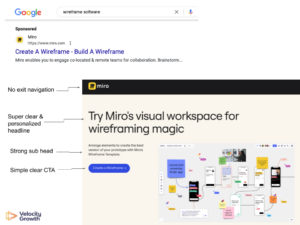Have You Got An Audio Strategy Yet?
It’s no secret that online is going more and more mobile. Website owners are looking to provide an experience that is less dependent on the screen size of their user’s devices, and more dependent on the content they can access. The result? The demand for audio content is growing rapidly, and as a result, so are the potential opportunities for businesses. So “what is an audio strategy?” you might say! “Is it the same as an audio content strategy?” The answer is YES! An audio strategy is how your brand uses audio content to achieve business goals. In this blog, we discuss what an audio strategy is, why you need one, and the elements, specifically associated with podcasting, that can propel your business into hyperdrive.
So what is an audio strategy?
An audio strategy is a way that a company can use audio content in order to achieve its business goals. This might include:
● Audio content for marketing purposes (e.g. as part of your email service provider’s email marketing), or as part of your online marketing strategy;
● Audio content for a brand’s website (e.g. podcasts and webinars);
● Audio content that is disseminated on third party channels (e.g. YouTube channels, Instagram soundtracks, Facebook live streaming);
● Audio content that is used for media relations (e.g. interviews and sound bites).
Why do you need an audio strategy?
One simple reason: the audio audience is massively expanding and studies show that this grouping is predominantly well-educated, affluent, gender-balanced, and very loyal. For example, it’s estimated that people are consuming up to seven podcasts per week, streaming up to 5 or more hours in a week. There is huge potential here! Imagine connecting directly with a prospective customer, directly in their ear, for even 10% of that week.
What’s more, with the world of social platforms becoming more and more saturated by the minute, it’s never been more important to have strong and engaging content. Without content that differentiates you, that catches the imagination and attention of scrollers, you’re likely draining your budget and falling far short of where you could and should be. Overall, it’s too narrow to just focus on creating for feeds! You need to maximise your content potential so that it can have longevity, have value, and create value for the prospective customer. People have higher expectations, want to digest content differently and more and more in a way that allows them to disengage from the screen. In a time when we’re even seeing a decline in Facebook user numbers for the first time ever, losing half a million global daily users in the fourth quarter of 2021, it’s time to start thinking differently and meeting the potential of your audio audience.
Broadening the depth and reach of your content
One of the best ways to get creative is through podcasting. They’re a great way to tell a story and engage with your audience in an entirely new way. They also make a huge amount of sense. As Google moves more and more to the world of voice-led searches, integrating a conversational approach required for this new form of search through transcribing your podcast matches this need perfectly. The SEO opportunity from podcasts shouldn’t be
underestimated either, and here at GU we’ve been really impressed by this! There are also the bonus points as Google brings up podcasts in search results. If you’re not already getting into the world of podcasts and thinking about how you can use one to your advantage, it’s time to start taking action. Finally, and perhaps the most obvious, podcasts offer a great way to build a community around your brand or business.
Though remember, you can’t just ignore your social feeds just because of the new world of audio. It still exists! But there are exciting ways to navigate this, bringing your audience into the podcasting studio with you by getting the camera out in front of the podcast recording to make long-form content. Then pull the golden nugget segments and push them into the feeds. Now you’ve achieved double the return on your time invested. And while you’re at it, and even better again, get two cameras going, one vertical and one horizontal, record the podcast and use the long form for YouTube and Facebook. Then cut the nuggets out for the feed on Facebook, LinkedIn, and Twitter and use snippets in vertical for Instagram stories, Facebook stories, and TikTok. Google also brings up video content in the search results.
A word of caution!
The biggest rule of podcasting is to NOT SELL. This is the opportunity to tell a story not to try and bombard people with your product and a SELL SELL SELL approach. People will simply unsubscribe, or not subscribe in the first place. This advice also rings true to those businesses that want to succeed in the newsfeed, but it is often casually ignored to the detriment of the time and budget gone into developing the content. Though it’s never been truer than for podcasting. No one wants to listen to 30 minutes of someone describing how great a product or service is? No thank you! Now, this isn’t to say you can’t get sponsored ads once or twice in the podcast or do a shoutout to a product or service at the end. That’s ok and totally acceptable!
The second biggest rule is don’t wait to see what your competitors are doing. Start now and stand out from the crowd. Differentiate yourself and your business will reap the benefits.
What does the future hold?
Podcasts are on the rise and that’s a good thing and it’s not going to change anytime soon. Start now, tell stories and solve problems. Always provide value. Avoid the sales pitch. And the results will show for themselves over time. And don’t forget, there are also huge opportunities for businesses to advertise on podcasts. This can be something worth checking out too, maybe a collaboration of some sort? Get creative, have fun, and don’t wait around!

Craig Zingerline is a 6 time founder who has helped dozens of companies scale their growth. Prior to Velocity Growth, Craig was the Chief Product Officer @ Sandboxx, Head of Growth at Upside Travel, CEO of Votion, Head of Growth at Red Tricycle, and VP at New Signature. In addition to in-house roles, Craig has advised and consulted with dozens of high growth startups (4 exits). He’s an award winning product strategist who has mentored hundreds of founders on growth, marketing, and product management.






